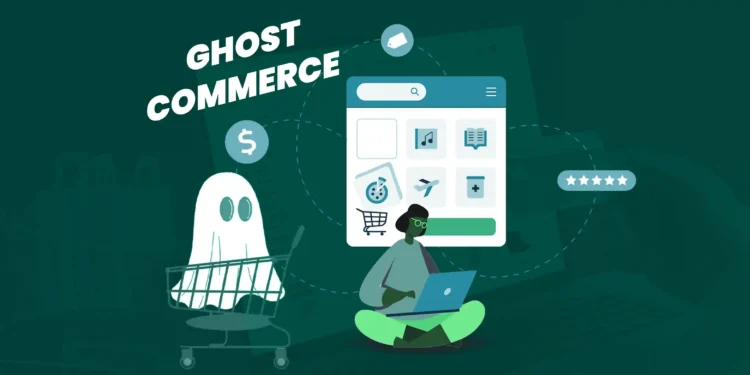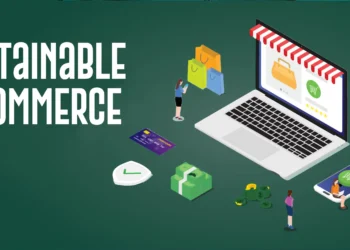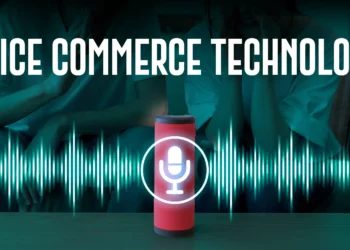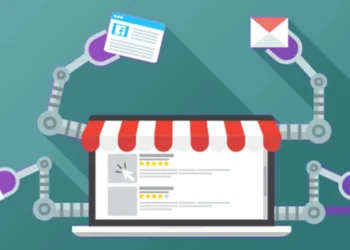The term that’s becoming more and more popular in the e-commerce space is ghost commerce. However, what is this e-commerce technology exactly, and how can it help both consumers and businesses?
We’ll explore the fundamentals of this Ecommerce platform and discuss its advantages in this blog article.
What is Ghost Commerce?
Ghost Commerce is a fresh and creative way for consumers to shop online, helping them to browse, pick, and buy things without having to go to a traditional e-commerce website.
The purchasing process is easily incorporated into messaging applications, social media sites, and other digital channels that users regularly use.
How Does Ghost Commerce Work?
Imagine coming across a post or advertisement for a product you’re interested in while browsing through your preferred social networking app.
Without leaving the app or website you’re now on, you can use this e-commerce technology to simply click on the product image, browse information, choose options like size or colour, and complete the transaction.
Key Concepts of Ghost Commerce
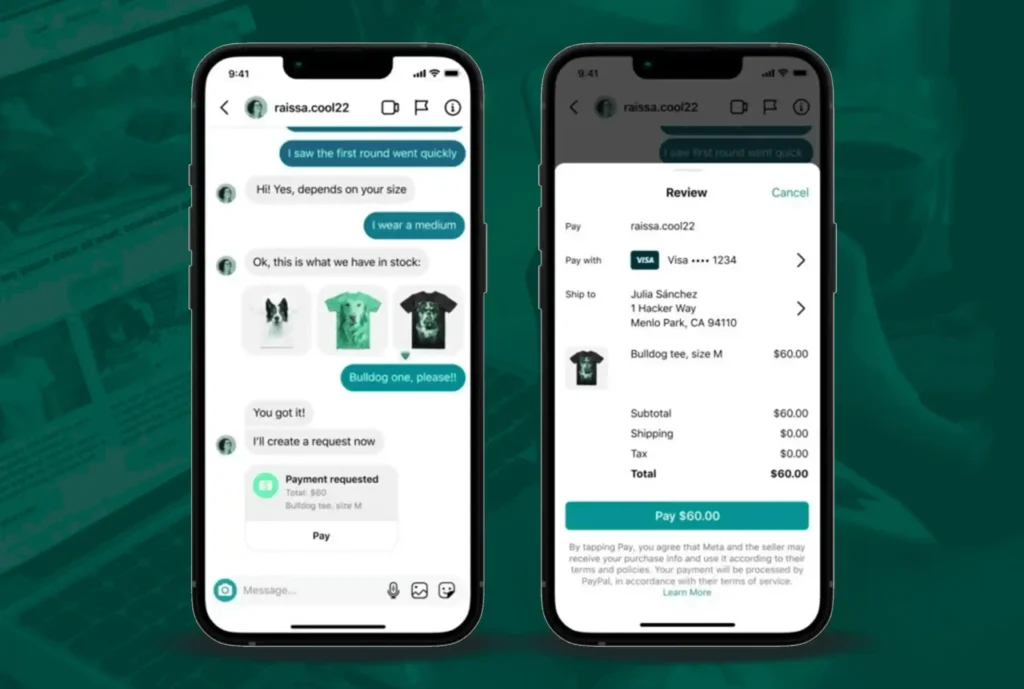
Social Media Integration: Ghost Commerce includes shopping capabilities straight into posts, stories, and advertisements, using the impact of social media sites like Facebook, Instagram, and TikTok. Users only need to tap or click a few times to find and buy things because of this perfect integration.
Social Media Integration: Ghost Commerce includes shopping capabilities straight into posts, stories, and advertisements, using the impact of social media sites like Facebook, Instagram, and TikTok. Users only need to tap or click a few times to find and buy things because of this perfect integration.
In-App Purchases: This e-commerce technology provides in-app purchases, which reduces interruption and extra steps during the purchasing process and removes the need for redirecting consumers to external websites.
Instant Checkout: Ghost Commerce speeds up the checkout process by securely storing payment details, making it easy for users to finish transactions, and reducing the percentage of cart abandonment.
Personalized suggestions: This e-commerce technology platforms use machine learning and data analytics to provide personalized product suggestions based on social interactions, browsing history, and user preferences.
Exploring Ghost Commerce in Depth
User Experience Optimization: By removing pointless stages from the purchasing process, this e-commerce technology focuses a high priority on user experience optimization. Users can browse, discover, and buy things easily when they are effortlessly integrated into comfortable digital settings. This increases user happiness and promotes repeat purchases.
Mobile-Friendly Approach: This e-commerce technology ‘s mobile-friendly strategy takes into consideration the preferences of modern customers as mobile usage continue to take over online interactions. Since social media and smartphone apps are the main digital engagement channels, it is logical to include shopping features straight into these platforms to maximize convenience and accessibility.
Social Proof and Influence: This e-commerce technology takes advantage of social proof and influence since people usually base their purchases on suggestions from friends, influencers, and social media posts. By providing effortless purchasing in social settings, companies can use social proof to increase conversions and promote customer loyalty.
Real-Time Support and Communication: This e-commerce technology provides chat features and messaging applications that encourage real-time support and communication. To increase trust and engagement, customers can ask questions, get help, and receive specific recommendations right throughout the shopping experience.
Data Security and Privacy: Providing strong data security and privacy protection is important because this e-commerce technology platforms handle sensitive consumer data and payment information. Users are more trusting and confident when encrypting is used, secure payment methods are used, and data protection laws are followed.
Benefits of Ghost Commerce
Smooth Shopping Experience: Ghost Commerce provides a smooth and continuous shopping experience within customers’ favorite digital platforms by doing away with the necessity for users to transfer between applications or websites to make purchases.
Increased Conversions: Ghost Commerce increases conversion rates by reducing complexity in the buying process by providing customized recommendations, which more successfully converts browsing consumers into paying customers.

Enhanced Engagement: Users are more likely to engage with products when they can easily find and interact with them while maintaining connections with friends and communities because of the integration of shopping features into social media and messaging apps.
Brand Visibility and Reach: By using the sizable user bases of well-known digital platforms, this e-commerce technology improves brand visibility and reach, helping companies present their goods to a larger audience and draw in new clients.
Data-Driven Analytics: By providing useful data insights on consumer behavior, preferences, and purchase trends, this e-commerce technology platforms help organizations improve their marketing strategies, product lines, and customer experiences.
Future Trends and Opportunities in Ghost Commerce
Before making a purchase, customers can view products in their natural surroundings because of the AR integration with this e-commerce technology. This immersive experience reduces customer hesitation and improves product understanding.
Voice commerce features in this e-commerce technology systems help customers use virtual assistants and voice commands to make transactions. This hands-free method attracts those with advanced technology and improves the purchasing experience.
By providing fixed records of product origins, authenticity, and supply chain information, blockchain technology can improve transparency and confidence in this e-commerce technology transactions. This transparency reduces the danger of fraud and increases consumer confidence.
Case Studies of Successful Ghost Commerce Implementations
Nike’s SNKRS App: By producing limited-edition sneakers only via the app, Nike’s SNKRS app includes this e-commerce technology. There is a sense of uniqueness and excitement created by the ability for users to make purchases, view product details, and receive notifications all within the app.
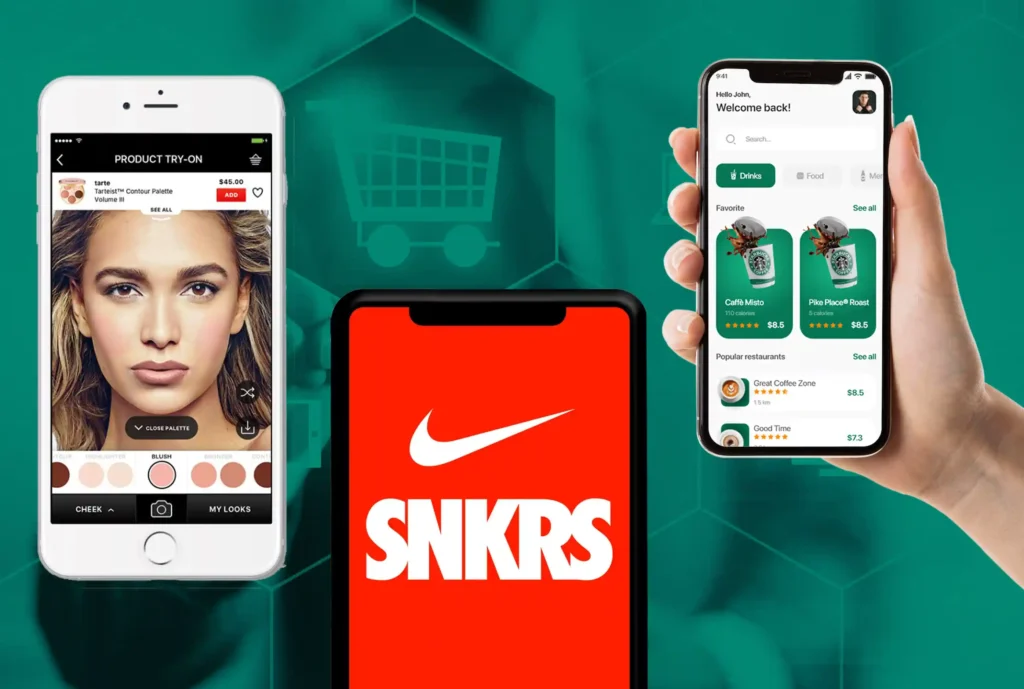
Sephora’s Virtual Artist: This tool helps customers to virtually try cosmetics and make decisions based on tailored suggestions. Beauty fans’ online purchasing experience is improved, and conversions are increased, because of this Ghost Commerce connection.
Starbucks’ Mobile Ordering and Payment System: Customers can easily purchase drinks, personalize their selections, and make payments through the Starbucks app. This Ghost Commerce strategy increases client loyalty, reduces wait times, and improves convenience.
FAQS
The term ghost commerce represents an upcoming trend in which online purchases happen automatically and effortlessly, frequently with the help of based on artificial intelligence methods. It transforms e-commerce convenience with its automatic buying, intelligent restructuring, and smooth shopping experiences without requiring direct human involvement.
The idea of this e-commerce technology involves the promotion and sale of goods by online influencers or made-up personas. By interacting with followers, promoting products, and making purchases via social media, these organizations cross the boundaries between e-commerce and entertainment to create a unique shopping experience.
The term ghost commerce pyramid scheme represents a fictitious business model in which members are assured large earnings by recruiting new members as opposed to making sales of real goods or services. It usually ends in financial losses for participants because it depends on ongoing recruiting to maintain payouts.
Conclusion
With the help of digital platforms and social media, this e-commerce technology improves the online shopping experience for customers by focusing on integration and user-centric design. Businesses can take advantage of this innovative trend to improve client experiences, increase sales, and maintain an advantage in the always-changing e-commerce market by understanding the fundamentals and advantages of this e-commerce technology.


